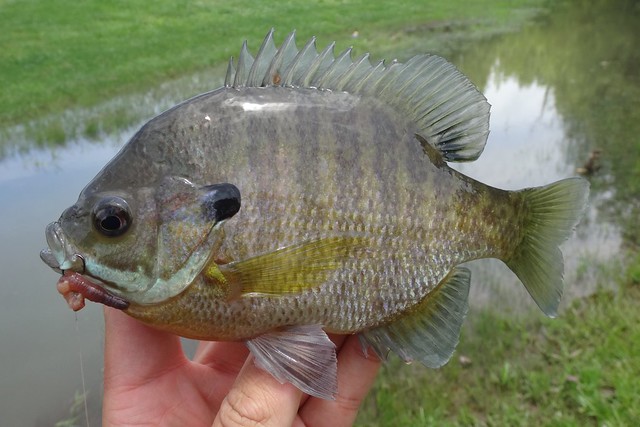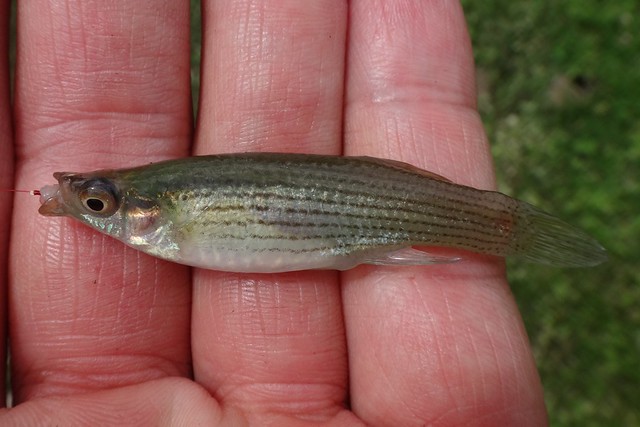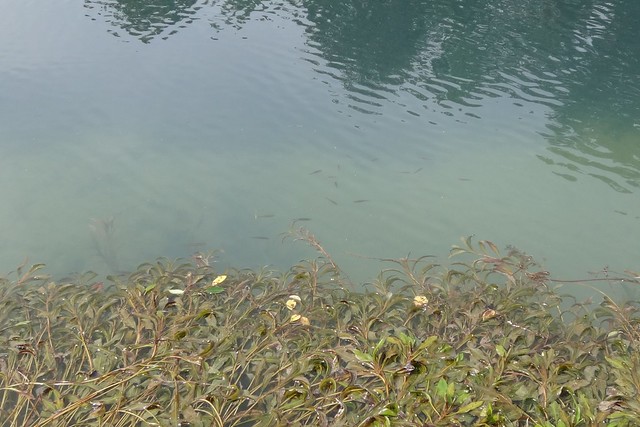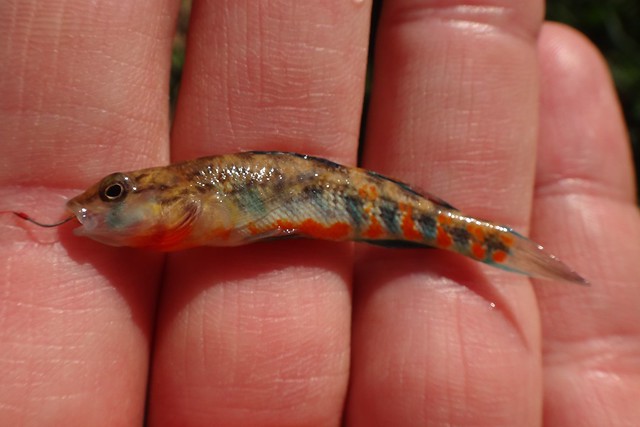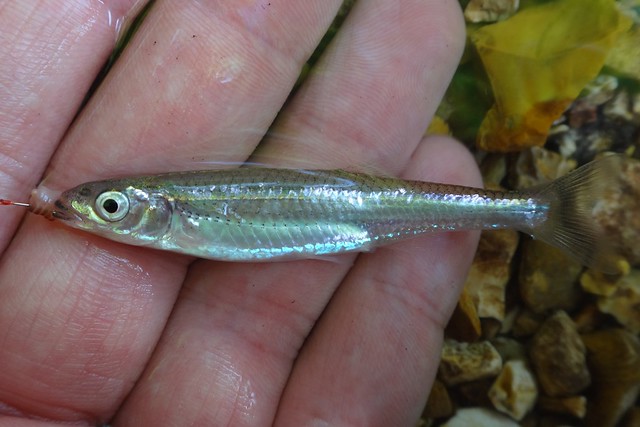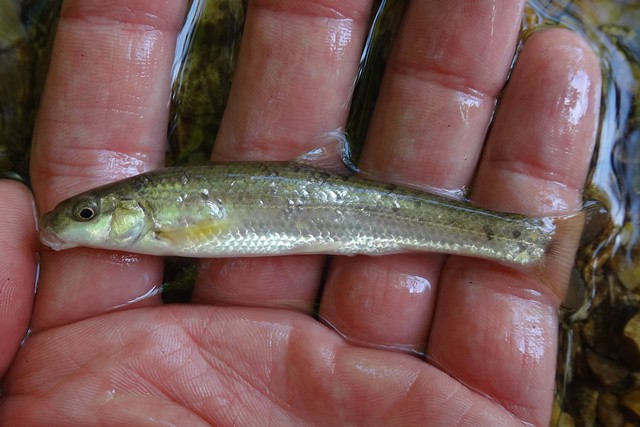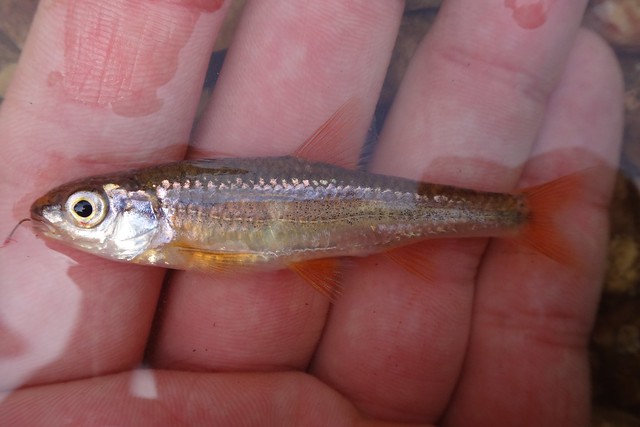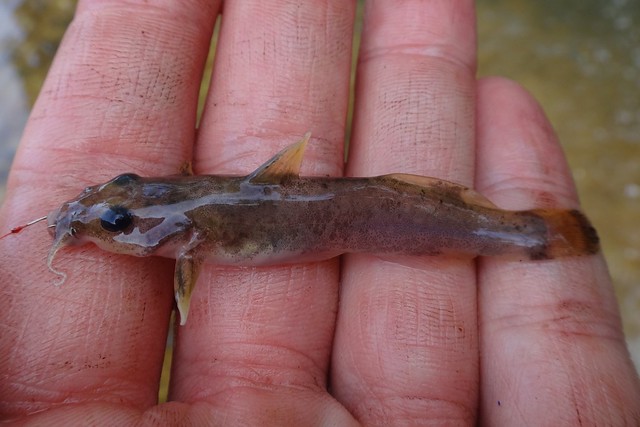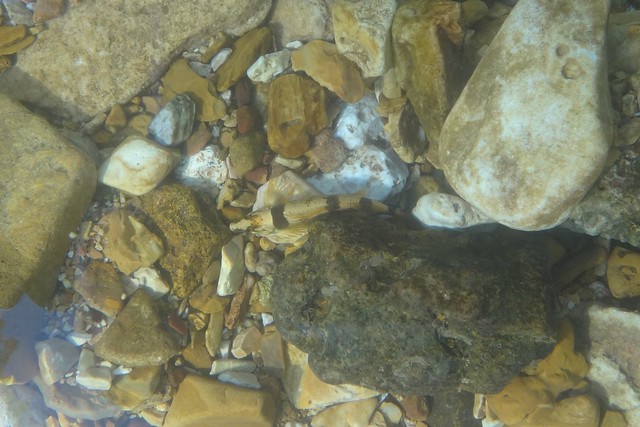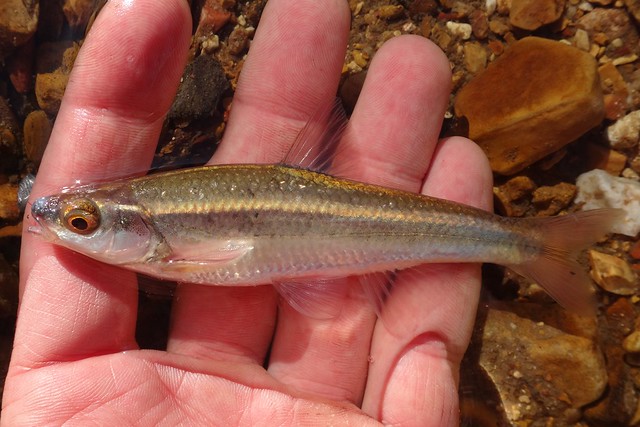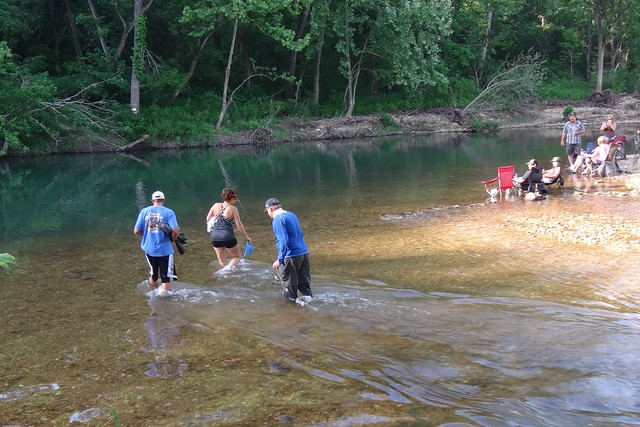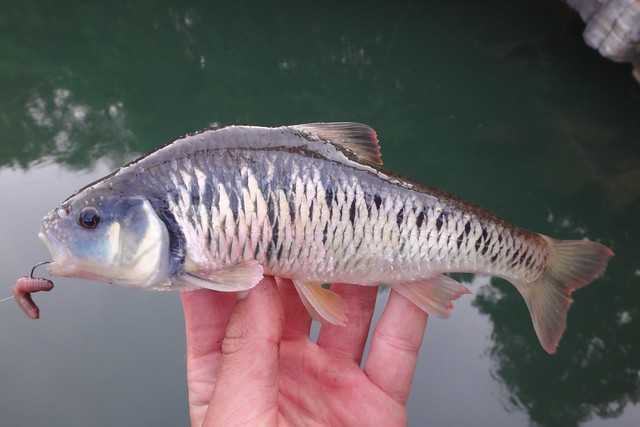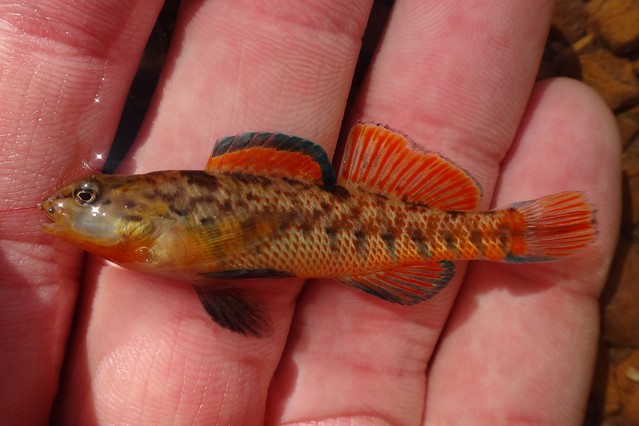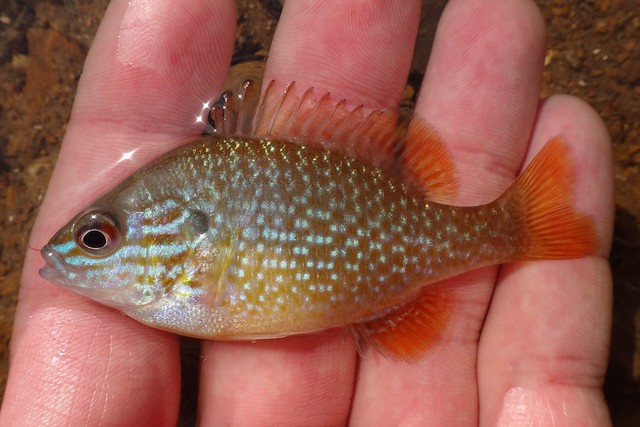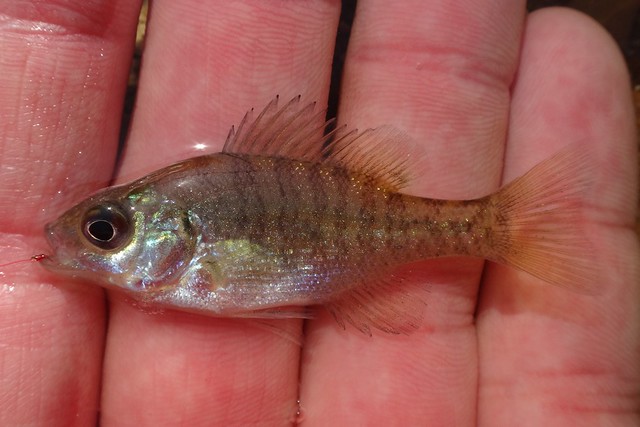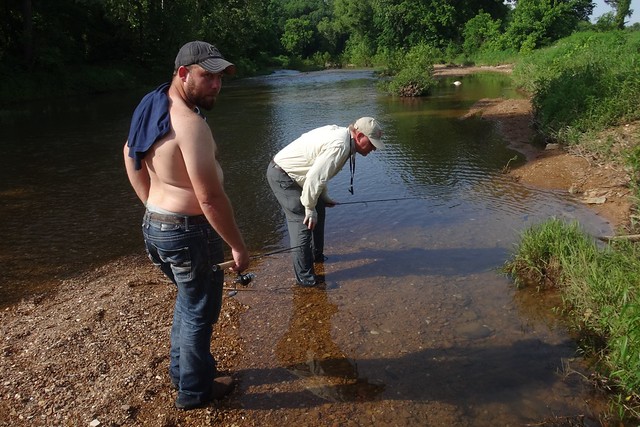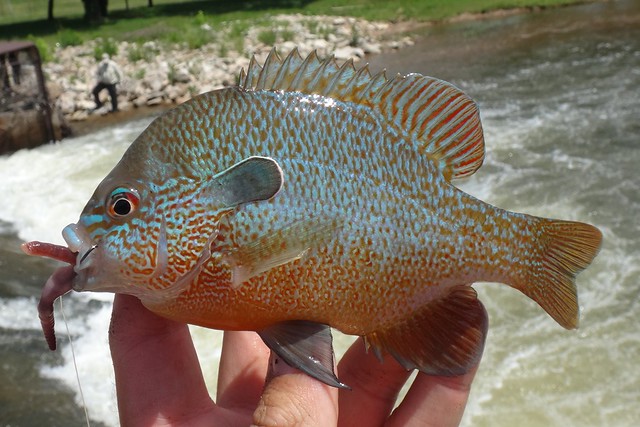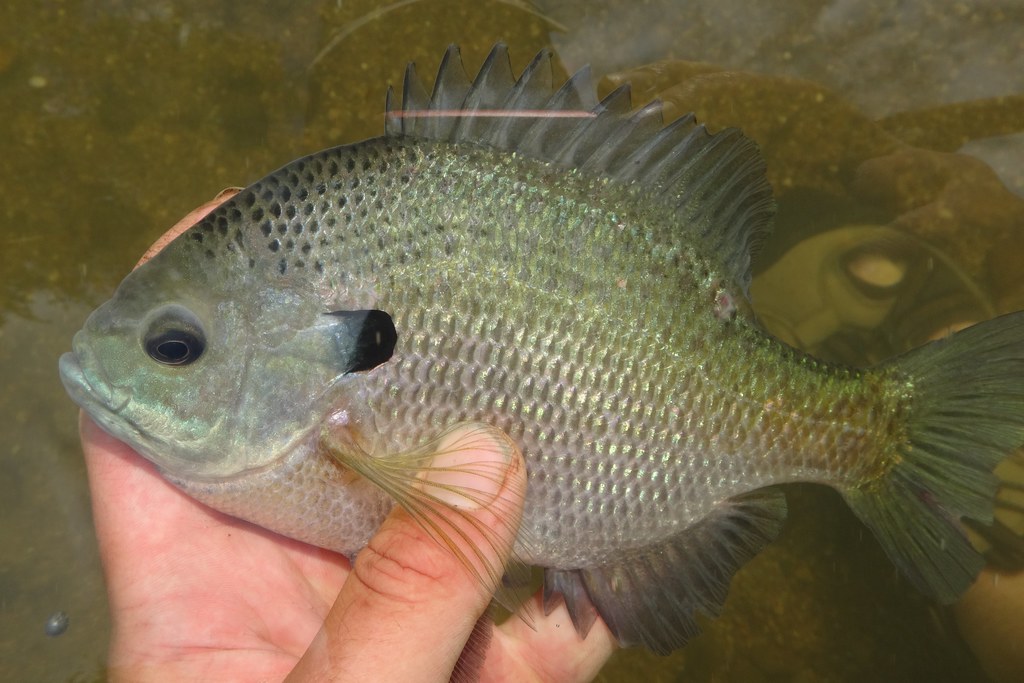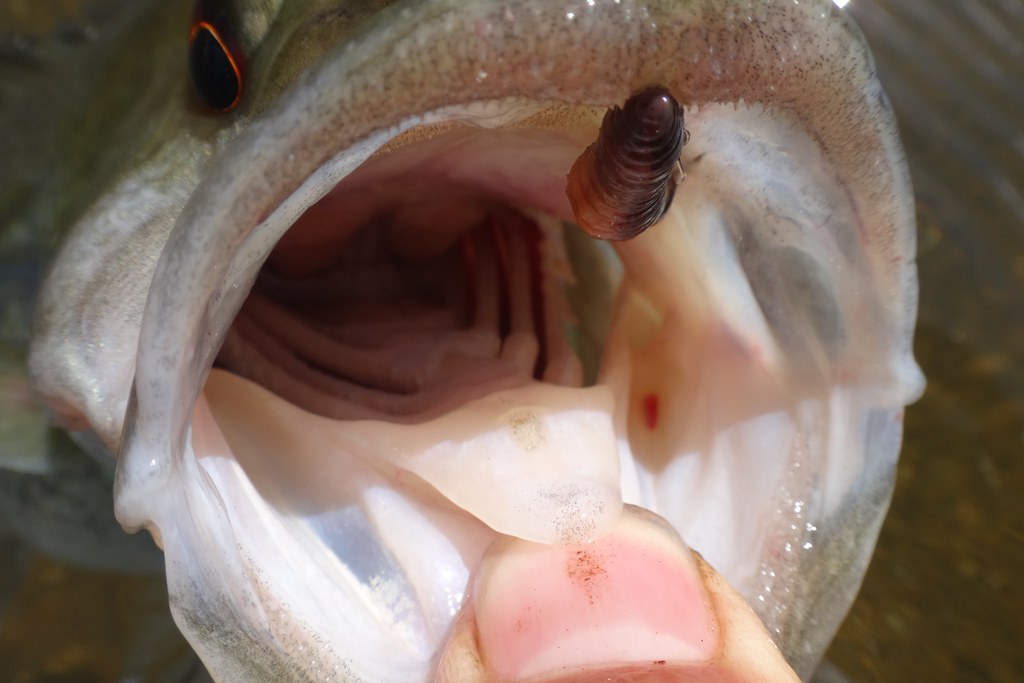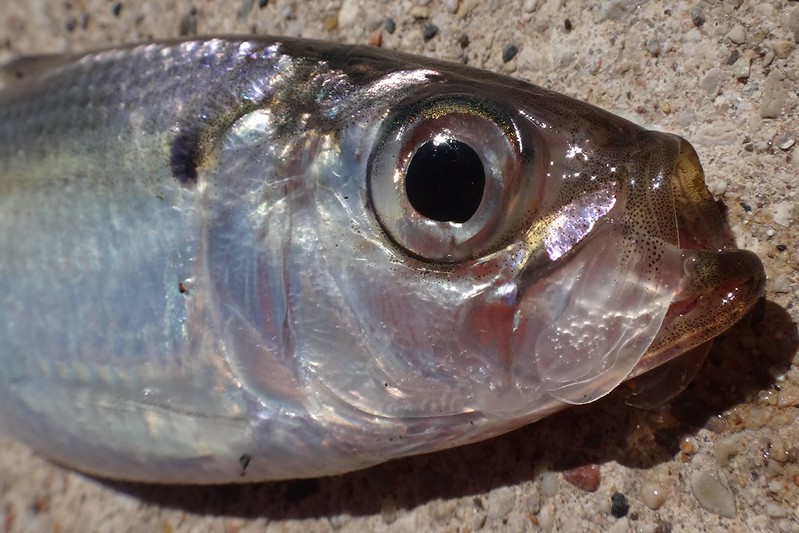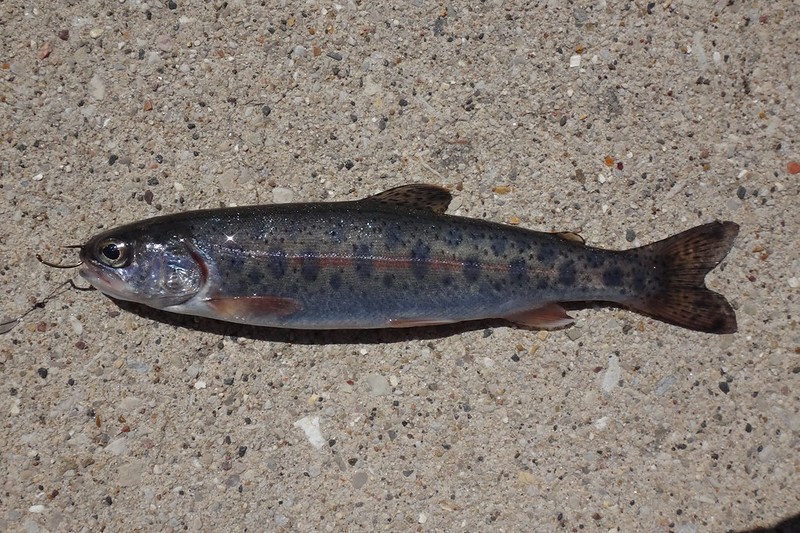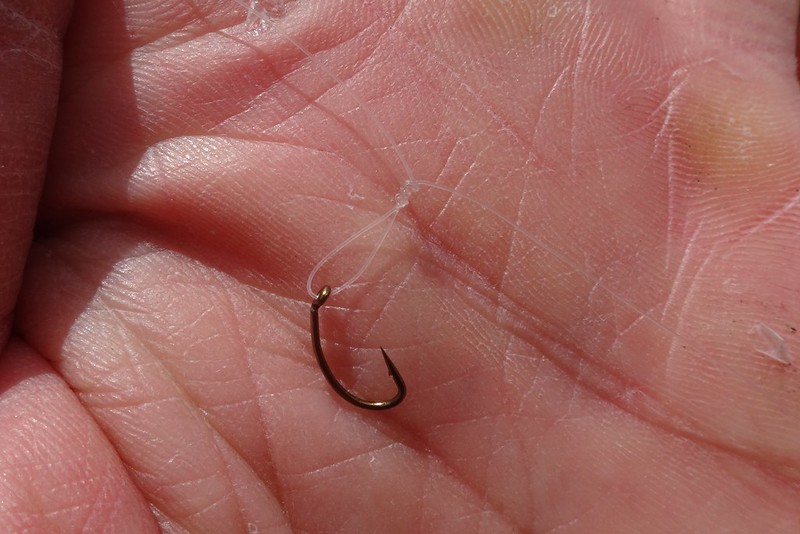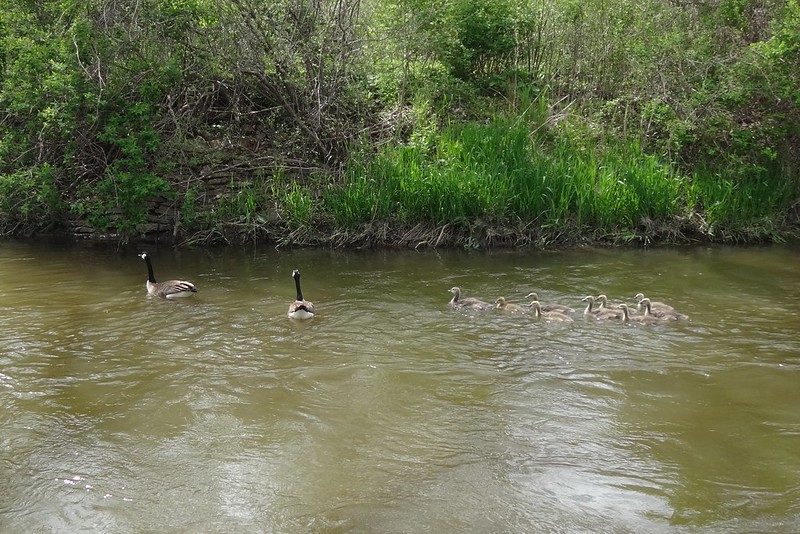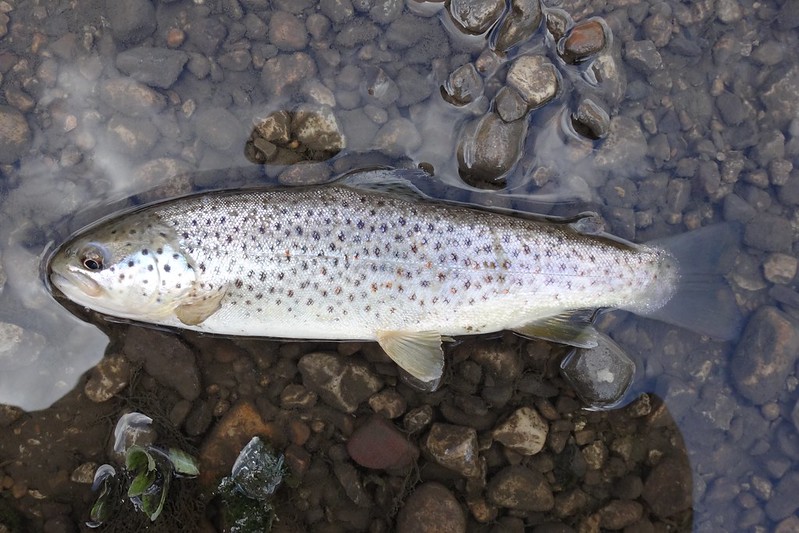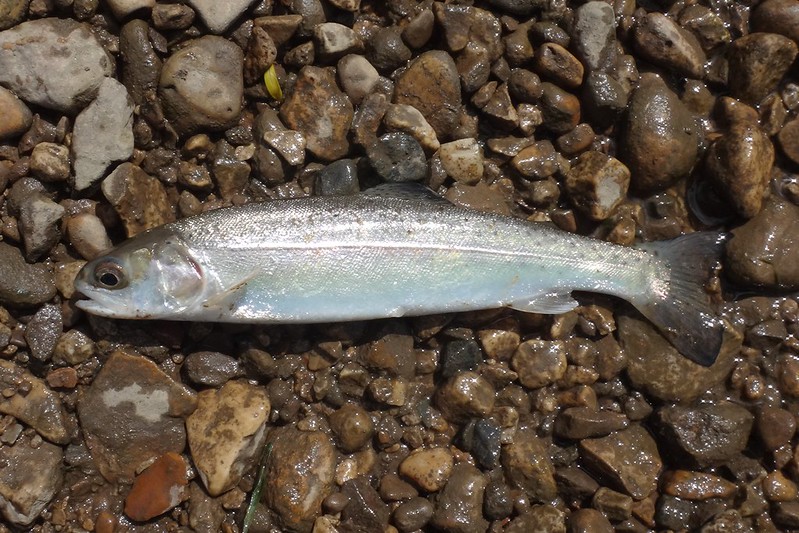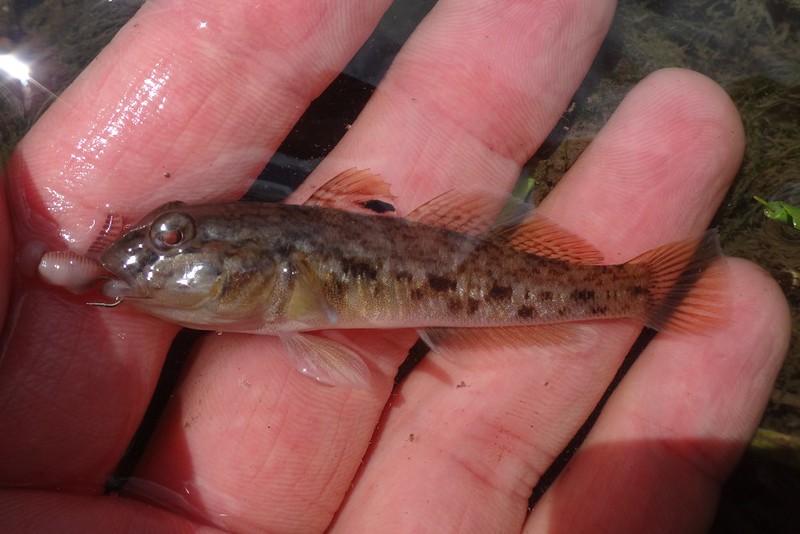https://1000fish.wordpress.com/
I insisted that we meet up with Tyler Goodale, who has quite the reputation of putting people on all sorts of fish in southeast Missouri. We picked him up and headed to his go-to bantam sunfish and starhead topminnow spot. While Steve cursed at the topminnows, I caught a trio of sunfish and arranged them for a quick photo. I've also seen orangespotted sunfish caught at this location, but wasn't able to catch one this time.
Warmouth (L. gulosus), Green Sunfish (L. cyanellus), and Bantam Sunfish (L. symmetricus)
Steve caught his targets, and we headed to a park in Poplar Bluff that has the rest of Missouri's sunfish species. The redspotted, dollar, and longear sunfish are incredibly colorful here in the spring. I was really excited to get better photos of them for my lifelist!
Redspotted Sunfish (Lepomis miniatus)
Dollar Sunfish (Lepomis marginatus)
Longear Sunfish (Lepomis megalotis)
Bluegill (Lepomis macrochirus)
The ditch in this park also has quite a few micros. I was able to catch the usual topminnow species and a surprise golden shiner, but I could not find the creek chubsuckers that others have seen there. We put a lot of effort towards creek chubsuckers on this trip, but they refused to cooperate. Steve renamed them with an F in their name. (I won't spell it out.)Blackspotted Topminnow (Fundulus olivaceus)
Starhead Topminnow (Fundulus dispar)
Golden Shiner (Notemigonus crysoleucas)
Our next stop was another of Tyler's go-to spots, a spring-fed pond where the food chain is dominated by big chain pickerel. This pond also has a healthy population of creek chub*uckers, but of course I had to tie on a Mepps spinner and catch a pickerel before thinking about anything else!
Chain Pickerel (Esox niger)
The chub*uckers weren't hard to find. We saw a few medium ones cruising the bottom, a cluster of large ones suspended near the surface, and hundreds of juveniles hanging out near mats of floating vegetation. The only ones we could get to show any interest were the juveniles, but they wouldn't commit and take our baits.
Steve caught a hornyhead chub in the pond, which was really unexpected. We saw some brook darters, but they proved too difficult to catch. We really wanted Steve to get one, so we headed back to the Poplar Bluff park, where they are more abundant. It took a while, but we each caught one.
Brook Darter (Etheostoma burri)
Now it was time to load up on stream fish. I knew a productive tributary of the Current River, so we headed west to give it a try. We couldn't see much in the turbulent water, so we dropped our baits into a pool and set the hook when we felt a few taps. We caught the typical minnow species that you can find in most Ozark streams.
Carmine Shiner (Notropis percobromus)
Central Stoneroller (Campostoma anomalum)
Hornyhead Chub (Nocomis biguttatus)
Ozark Minnow (Notropis nubilus)
Bleeding Shiner (Luxilus zonatus)
We continued west to fish another drainage, the White River. I've visiting this spot with other people in order to catch Ozark bass, yoke darter, and checkered madtom, and it's always delivered. The Ozark bass weren't huge, but they were there. (Ask Steve how long it took for him to catch one.)
Ozark Bass (Ambloplites constellatus)
Longear Sunfish (Lepomis megalotis)
The bass and sunfish were in a deep pool with submerged boulders. We knew the riffle downstream would have different species, so we rigged up Tanago hooks and got in the water. The surface of the water at the head of the riffle wasn't turbulent, so that's where we focused. This was my first time seeing a knobfin sculpin at this spot, and I was amazed at how orange it was. The picture below really does not do it justice.
Ozark Madtom (Noturus albater)
Knobfin Sculpin (Cottus immaculatus)
Despite a large number of intoxicated vacationers crossing in front of us (seriously), Steve was able to catch quite a few of our targets. However, we both failed to catch a yoke darter. We saw plenty of them, and even got a few bites, but neither of us could successfully hook one!
Yoke Darter (Etheostoma juliae)
In the interest of time we finally had to give up on the yoke darters. To get my self confidence back, I caught a few of the easier species at the head of the riffle, in this case rainbow darters and duskystripe shiner.
Rainbow Darter (Etheostoma caeruleum)
Duskystripe Shiner (Luxilus pilsbryi)
It had been a long, hot day, so I grabbed some waters from the car and took a break with Tyler. We sat on the bank and watched Steve fish the head of the riffle. It was good entertainment watching him try to not get upset as drunk people walked in front of them. We were secretly hoping for some drama, but unfortunately Steve was patient and didn't lose his cool.
The sun was disappearing over the hills so returned to the deep pool to fish for checkered madtoms. We could see quite a few fish in the shallow water near shore - redhorse, gar, and a variety of shiners and other micros. The redhorse wouldn't bite, but I was able to catch the biggest striped shiner I had ever seen. It was enormous!
Striped Shiner (Luxilus chrysocephalus)
Steve succeeded in catching his lifer checkered madtom, and we called it a night. We stayed in a small town on the Missouri / Arkansas border. Our plan was to fish a few spots in Arkansas so Steve could add it to the list of states he's fished in (he's only missing Oklahoma now). We woke up a beautiful view of a spring fed river, rolling hills, power lines, and a train hauling coal.
We headed south to a creek that had sampling data showing good numbers of strawberry darters. I missed out on this species the previous summer, and at this point it was my only chance to catch a new species. I ignored the rainbow darters in the main branch of the creek. Just as I expected, the strawberry darters were hanging out in quite side pools with vegetation. Success!
Strawberry Darter (Etheostoma fragi) - new hook & line species #334
With the strawberry darter out of the way, I spent the rest of my time seeing how many species I could catch from the main part of the creek. You can see the differences between strawberry and rainbow darters by comparing the two photos.
Rainbow Darter (Etheostoma caeruleum)
Rainbow Darter (Etheostoma caeruleum)
Northern Studfish (Fundulus catenatus)
Longear Sunfish (Lepomis megalotis)
Bluegill (Lepomis macrochirus)
Here's a shot of Steve trying to catch a strawberry darter in the side pool. Tyler, meanwhile, is working on his modeling pose. Some people are just too sexy to wear shirts.
We had trouble finding more strawberry darters, so we moved to a nearby stream where Steve was able to catch one. Our final spot was a small river that looked promising for redhorse. We hoped to find black redhorse for Steve and pealip redhorse for both of us. I'm sure there were some redhorse in the spot where we were fishing, but we couldn't get our baits past the longear sunfish.
Longear Sunfish (Lepomis megalotis)
Finally it was time to hit the road and head back to the St. Louis airport. We dropped Tyler off in Poplar Bluff and continued north. Steve ended up with 14 new lifers. Not bad for only two and a half days of fishing!




